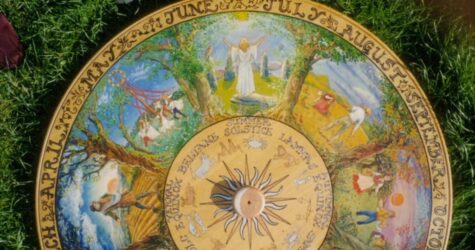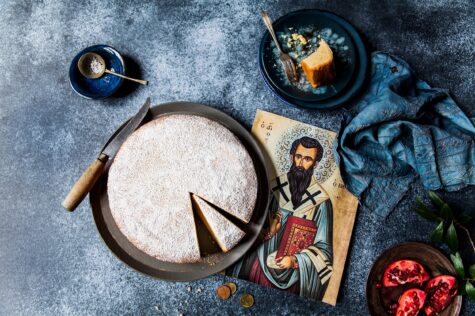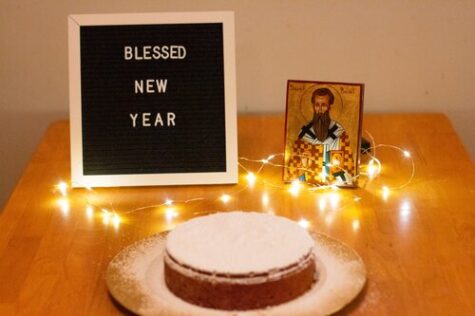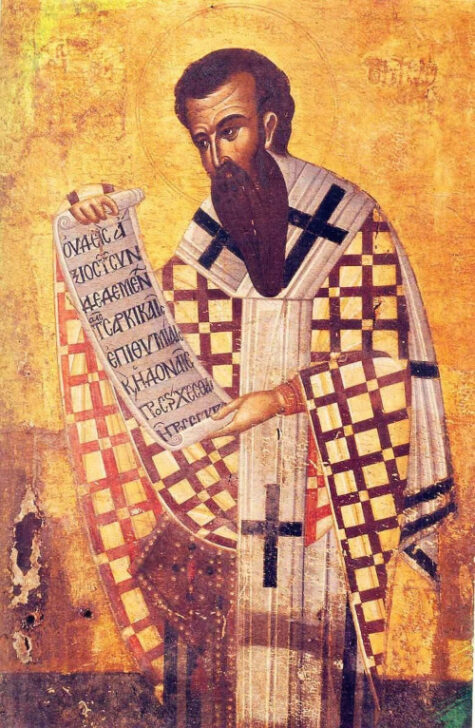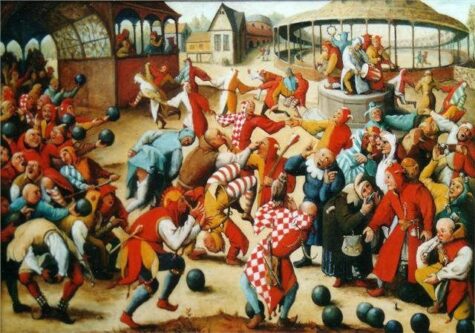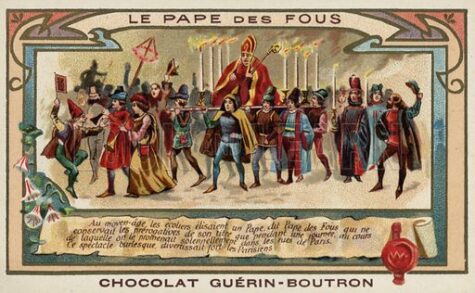Yearly Archives: 2021
There is a lot to celebrate in February. This is a list of pretty much everything that goes on during the second month of the year. Many of these dates change from year to year. The days that change are marked with this » symbol.
February Lore and General Info:
Astronomical Events
- 11 » New Moon
- 27 » Full Moon –Full Snow Moon or Quickening Moon
Astrological Events
Depending on which astrological system you adhere to, these are the signs that show up in February of 2021. Be aware that some of these dates will vary from year to year. Unlike the Sun signs which might just shift by 1 or 2 days, the dates of the various Moon signs will vary widely from year to year. The same holds true for the Chinese Zodiac. The Celtic Tree Signs are based on an arbitrary system and stay the same from year to year.
Western Astrology
The February Sun begins in Aquarius and finishes up in Pisces:
- Aquarius: Jan 19 thru Feb 18 » Sun in Aquarius
- Pisces: Feb 18 thru Mar 20 » Sun in Pisces
The February 2021 Moon cycles through the signs as follows. You will notice that the Moon might begin the day in one sign and by the end of the day may have moved into another sign, so timing matters if you are wanting to be precise:
The moon cycles through the signs are as follows:
- Libra » Feb 1 – Feb 3: Moon in Libra
- Scorpio » Feb 3 – Feb 5: Moon in Scorpio
- Sagittarius» Feb 5 – Feb 7: Moon in Sagittarius
- Capricorn» Feb 7 – Feb 10: Moon in Capricorn
- Aquarius » Feb 10 – Feb 12: Moon in Aquarius
- Pisces » Feb 12 – Feb 14: Moon in Pisces
- Aries » Feb 14 – Feb 17: Moon in Aries
- Taurus » Feb 17 – Feb 19: Moon in Taurus
- Gemini» Feb 19 – Feb 22:Moon in Gemini
- Cancer » Feb 22 – Feb 24: Moon in Cancer
- Leo » Feb 24 – Feb 26: Moon in Leo
- Virgo » Feb 26 – Feb 28: Moon in Virgo
- Libra » Feb 28 – Mar 2: Moon in Libra
The Celtic Tree Signs in February:
- Rowan: Jan 21 thru Feb 17 – Rowan Tree Month
- Ash: Feb 18 to Mar 17 – Ash Tree Month
The Alternative Celtic Zodiac is as follows:
- Poplar: Feb 1 – Feb 10
- Larch: Feb 11 – Feb 20
- Pine: Feb 21 – Mar 2
The Chinese Calendar and Zodiac
The month of February begins in the Chinese Year of the Rat. The year of the Ox (sometimes referred to as the Cow) kicks in on February 12th (Chinese lunar New Year Day) and lasts until January 31st, 2022. This will be a White Metal Ox year. Each Month is also assigned a specific animal. Here’s what shows up in February 2021.
- Cow: Jan 5 – Feb 2 (Chinese Zodiac)
- Cow: Jan 13 – Feb 12 (Lunar Calendar – 12th Lunar Month)
- Tiger: Feb 3 – Mar 4 (Chinese Zodiac)
- Tiger: Feb 12 – Mar 12 (Lunar Calendar – 1st Lunar Month)
Note: The traditional Chinese Astrology birth chart is built by the Chinese Stem Branch Calendar, not the Chinese Lunar Calendar, which I think is really confusing. Because of a difference in time zones, the lunar months will have different pattern between China and the USA.
Lucky and Unlucky Days
You might want to plan moving, traveling, major purchases, court dates, and weddings around these dates, avoiding the unlucky days and utilizing the lucky ones.
- These are the lucky days in February:
11, 21, 25, and 26. - These are the unlucky days in February:
1, 3, 7, 9, 12, 16, 17, 18 and 23.
Fatal Days
The fourth day bringeth down to death,
The third will stop a strong man’s breath.
Holidays and Holy Days
Many of the holidays begin on the eve of the night before and end on the eve of the day of. It’s also important to remember that the dates of archaic festivals and feast days may vary widely depending on the source.
February 1
- 1: Vasant Panchami
- 1: Là Fhèill Brìghde
- 1: Imbolc Eve
- 1 thru 14: Old Greek Festival of Dionysus.
- 1 thru 7 » Sami Week and Reindeer Race (Norway)
February 2
- 2: Groundhog Day
- 2: The Bear Wakes Up
- 2: Saint Brighid’s Day
- 2: Disting – The Charming of the Plow – dates vary
- 2: Candlemas
- 2: Imbolc
- 2: Lammas or Lughnasadh (Southern Hemisphere)
- 2: Yoruba/Santeria feast of Oya, Orisha of Death and Rebirth.
February 3
- 3 » Pagerwesi (Bali) celebrates Sang Hyang Pramesti Guru, god of teachers and creator of the universe. Offerings are made to stave off evil forces, and also for the uncremated dead.
- 3 » Bean Throwing Ceremony (Shinto)
- 3: Setsubun
February 4
- 4: King Frost Day
- 4: Li Chun (Chinese) – Auspicious day
February 5
- 5: Tibetan New Year
- 5 » Kitchen God Festival (Xiao Nian Festival)
- 5: St Agatha’s Day
- 5: Primrose Day
- 5: Fornacalia – The Day of the Ovens – anytime between Feb 5 and Feb 17
February 6
- 6 » Dakini Day (Tibetan)
- 6: The Feast of Aphrodite
- 6 » Burning the Hom Strom
February 7
- 7: Day of Selene
- 7 » Day of Ekadashi (Hindu)
February 8
- 8: Festival for the Broken Needles
- 8: Nirvana Day – celebrated on Feb 15 in some areas
- 8: Hari Kuyo, Japan
- 8: Kite Flying Day
February 9
- 9: Feast of Apollo
February 11
- 11: Pattern Day
- 11 thru 12 » Mauni Amavasya
- 11 thru 13: The Anthesteria
February 12
- 12 » Chinese New Year – Year of the Ox (sometimes referred to as the Year of the Cow)
- 12 » The Noumenia
- 12 » Night of Hekate Suppers
- 12: Festival of Artemis – the Greek goddess of the hunt
- 12 thru 14: Borrowed Days (see also March 29-31)
February 13
- 13 » Celebrating The Agathos Daimon
- 13 » Tumpek Landep (Bali) – Celebration of all tools and appliances made of iron.
- 13 thru 21: The Parentalis – festival to honor the spirits of the ancestors
February 14
- 14: St. Valentine’s Day
- 14: Feast of Vali
- 14 » Meatfare Sunday
- 14 » Transfiguration Sunday
- 14 » Cheese Fare Sunday
February 15
- 15: Sigfrid’s Day
- 15: Lupercalia – the festival of Lupercus, the Roman god of flocks and fertility.
- 15: Kamakura Day
February 16
- 16 » Sarasvati Puja – Vasant Panchami
- 16 » Shrove Tuesday
- 16 » Mardi Gras
- 16 » Pancake Day
February 17
- 17 : Feast of Shesmu
- 17 » Ash Wednesday
- 17 » The 40 days of Lent begin
- 17: Toshigoi – Shinto rite honoring the Kami and offering prayers for a bountiful rice harvest.
- 17: Festival of Quirinus – god of war, storms and thunder
February 18
- 18: Feast of Our Lady of Lourdes
- 18 and 19: Spenta Armaiti (Zoroastrian)
- 18: Rain Water begins (Chinese Farmer’s Calendar)
February 19
- 19 » Everyman’s Birthday
February 20
- 20: Day of Tacita
February 21
- 21: Feralia – an ancient Roman Day of the Dead
- 21: Toshi-goi-no-Matsuri known (also as the Yakuyoke festival) – Shinto rite honoring the Kami and offering prayers for a bountiful rice harvest.
February 22
- 22: Caristia – Roman holiday of family reunions
February 23
- 23: Festival of Terminus
- 23 » Day of Ekadashi (Hindu)
February 24
- 24: Flight of the King – Regifugium
February 25
- 25: Day of Mut
February 26
- 26: Day of Nuit
- 26 » Lantern Festival (China)
- 26 » The Great Fifteenth
- 26: Hygeia’s Day
February 28
- 28: Saxon Cake Day – cakes offered to the God and the Goddess.
- 28: Kalevala Day – the epic poem, Kalevala is celebrated by the Finns.
- 28: Old Slavic Velja Noc – Spirits of the dead visit their living relatives, overseen by Veles, Lord of the Dead.

Saint Days
There is a surprising amount of magick associated with Saint days This is a very short list of the Saint days in February, there are many many more. As time goes by I may end up listing them all, but for now, this is what I have.
- 3: St. Blaze Day
- 3: St. Anskar’s Day
- 3 thru 5: Festival of Saint Agatha
- 4: Feast of St. John de Brito
- 9: St. Apollonia’s Day
- 11: St. Caedmon’s Day
- 14: St. Valentine’s Day
Recipes For February
- Breasts of St Agatha – St Agatha’s Day
Many more seasonal recipes, including recipes for new and full moon ceremonies, ancient Greek and Roman holidays, Asian festivals and etc can be found here: Seasonal Recipes.
Notes:
Any February lore, almanac, astrological, and celebration dates that have been shared after this post was published can be found by searching the February posts to see what’s new.
A lot of work went into this post. It was compiled from various sources by Shirley Twofeathers for The Pagan Calendar, you may repost and share without karmic repercussions, but only if you give me credit and a link back to this website. Blessed be.
This point in the agricultural calendar is marked by the ploughing of the soil to allow it to prepare for the seed, and any energy work performed now is all about groundwork. The surface of the earth appears barren, but the life force is stirring beneath. Ask yourself what you need to prepare in order to plant the seeds of your dreams this year.
The Celtic fire festival of Imbolc (2 February) falls in the Rowan Moon, lending this time associations with the goddess Brigid to whom the festivities are dedicated. This is the perfect time to perform initiations and for spells of power and success.
- Dates: January 21 thru February 17
- Celtic Name: Luis
- Language of Flowers: Prudence
- Qualities: protection, magical, healing, light, spring,
- Color: White
- Themes: Hearth and Home, Family, Personal Power, Spirituality, Success, Protection.
Known as the Bride, Brigid represents the mother of the new-born Sun and all candle energy work is sacred to her. Like the snowdrops peeking out of the ground to meet the goddess, white is a powerful symbol during this month.
During the Rowan Moon wear white to cast energy, use white candles and feast on white foods to attune to the season. Begin spring cleaning now. As the light increases, you will need to clear out your clutter with all your energy to make way for new growth. Have a Rowan Moon dinner party and ask your guests to wear white, dine by candlelight and eat seeds such as beans, pulses and nuts.
Look for the first snowdrops of the season and make a wish when you see one. Snowdrops hold the potential of spring. Tie a white ribbon on a rowan tree while saying the names of those you love. The tree will send out healing vibrations to them.
Known by the Celts as Luis (pronounced loush), the Rowan is associated with astral travel, personal power, and success. A charm carved into a bit of a Rowan twig will protect the wearer from harm. The Norsemen were known to have used Rowan branches as rune staves of protection. In some countries, Rowan is planted in graveyards to prevent the dead from lingering around too long.
Rowan the Thinker
Rowan is the philosophical sign of the Celtic zodiac. People born under this Celtic tree astrology sign tend to be keen-minded visionaries, with creative thoughts and high ideals. They tend to be aloof and often feel like other people don’t understand them. However, the Rowan signs are full of energy and devotion and are passionate when it comes to persuasion. The Rowan from the Celtic tree horoscope is compatible with the Ivy and Hawthorn signs.
The rowan tree is known for balance, clarity, vision, protection, divination, and transformation. For those who believe that the trees speak to us when we listen with complete silence, the rowan tree whispers encouragement to look deeper, look beyond the focus of your worldly eyesight to go beyond the physical world and engage with worlds beyond that which we are comfortable with.
Another amazing lesson to be found in the rowan tree comes from observing where they grow and how determined they are to survive, even at times sprouting up within other trees. Some see this as an analogy for us to find connections in unexpected places.
Rowan Magick and Lore
The beautiful rowan is one of our most beautiful and colorful trees – with frothy white blossoms in spring, delicate feathered leaves, and colorful red autumn berries. It’s also traditionally considered as one of most magical trees!
The Druids believed the rowan tree contained a spirit that had secret knowledge of immortality and personal freedom. In Norse mythical tales, it’s said that the rowan saved the life of the god Thor as he was being swept away in the river Vimur – he caught hold of a rowan tree on the bank and pulled himself to safety.
In ancient Celtic mythology, rowan was considered as the mythical ‘tree of life’ – the tree of life bears life-giving fruit each month and at the quarter of the year. The magical berries of the tree could sustain, heal, and prolong life.
Icelandic myth gives the rowan tree a connection with light – there, the rowan is a tree of the winter solstice. The frost glistening on midwinter rowan trees in moonlight fills these magical trees with tiny stars and links to ancient traditions of magical ‘moon trees’ decorated with lights (stars). The star-lights in the rowan bring the light energy of the spirit of the returning year in that important solstice moment of darkness as the year turns from darkening to lightening.
The traditions tell of a special star glowing atop the rowan tree – an ancient rite that’s surely influences our modern tradition for topping our own winter solstice trees (Christmas trees) with a star.
A Rowan Witch Cross
This protection charm represents the waxing energies of the Sun and can be hung in the home to attract good luck.
Collect together two straight sticks of rowan wood. Remember to leave an offering of thanks on a breach, such as a strand of hair, or thread or ribbon.
Hold the sticks in a cross and say,
“Spirits of this wood,
I bring you together for the good of all.”
Now bind the sticks into an equal-armed cross and secure them with red thread. As you do this visualize a powerful white light.
Hold the charm up to the Sun and say:
“Behold the Wheel of Brighid,
Blessed be.”
Sources:
St. Basil’s Day, January 1st, commemorates the day in which (it’s believed) Basil of Caesarea died. The Festival of Saint Basil is the Greek New Year.
In Greek tradition, Basil brings gifts to children every January 1. Children leave their shoes by the fireplace in hopes that St. Basil will fill them with gifts. A large feast is prepared, the larger the luckier the year will be. Pork is usually the main dish. It is customary on his feast day to visit the homes of friends and relatives, to sing New Year’s carols, and to set an extra place at the table for Saint Basil.
Traditionally Vasilopita or Vaselopita, a special bread or cake, is baked on St. Basil’s Day Eve, and served at midnight. The cake is handed out in a particular order. The first piece is for the remembrance of St. Basil and the second is for the household. Those pieces are taken to the church to be blessed, then given to the poor. The rest of the slices are distributed from the eldest member of the household to the youngest.
A coin or trinket is hidden inside the cake, and the person who gets the piece with the hidden treasure will have luck in the coming year.
Vasilopita | St. Basil’s Bread
Make sure everyone knows a quarter is hidden in the cake so they search for it and do not choke on it.
- 1 cup butter, unsalted
- 2 cups granulated sugar
- 3 cups all-purpose flour
- 1/2 teaspoon cinnamon
- 1/2 teaspoon nutmeg
- 6 eggs
- 2 teaspoons baking powder
- 1/2 teaspoon baking soda
- 1 cup warm milk
- 1 tablespoon lemon juice
- zest of 1 orange
- zest of 1 lemon
- 1/4 cup blanched slivered almonds
- 2 tablespoons granulated sugar
- a clean quarter
Preheat oven to 350F. Generously grease a 10-inch round cake pan. Cream the butter and sugar together until light and fluffy. Stir in the flour, cinnamon, and nutmeg. Mix until mealy. Add the eggs one at a time, mixing well after each addition.
In a separate bowl, combine baking powder, baking soda, milk, lemon juice, and zests. Mix into the batter, then pour into prepared pan. Sprinkle with nuts and sugar. Bake 40-45 minutes. Gently push a quarter into the cake. Cool 10 minutes. Invert cake onto platter. Serve warm.
A Feast Day Prayer to Saint Basil
Saint Basil, O great follower of God, help all as well as me. Defender of orthodoxy, defend us too. Great follower of God, pray to him for all your people, as well as for unworthy me. Strong knight and leader of Ostrog, save us from the seen and unseen. Raised by Serbian soil to be the light in front of God, be our light and light up our road, and make the darkness disappear.
With prayer and tears you have warmed the cold cliffs of Ostrog, please warm our hearts with God’s spirit, so we can be saved. From all corners of the world to your grave come the weak and the ill, and you helped them, got rid of their demons as well as the devil, and healed their souls and bodies.
Please continue to help, the baptized and the nonbaptized, everybody and me as well. You brought peace to fighting brothers, please continue to bring peace, help the divided, make the sad happy, calm the stubborn, heal the sick. Saint Basil, O miracle worker, father of our spirit, listen and hear your children’s spirits in the name of Jesus Christ.
Amen.
About Saint Basil
Basil, being born into a wealthy family, gave away all his possessions to the poor, the underprivileged, those in need, and children. For Greeks and others in the Orthodox tradition, Basil is the saint associated with Santa Claus as opposed to the western tradition of St Nicholas
St. Basil, also called Saint Basil the Great, is one of the most distinguished Doctors of the Church and a forefather of the Greek Orthodox Church. St. Basil was born in the year 329 or 330 and died in the year 379. He is the Patron of Russia, Cappadocia, hospital administrators, reformers, monks, education, exorcism, and liturgists.
Basil’s life changed radically after he encountered Eustathius of Sebaste, a charismatic bishop and ascetic. Abandoning his legal and teaching career, Basil devoted his life to God. In a letter he described his spiritual awakening:
I had wasted much time on follies and spent nearly all of my youth in vain labors, and devotion to the teachings of a wisdom that God had made foolish. Suddenly, I awoke as out of a deep sleep. I beheld the wonderful light of the Gospel truth, and I recognized the nothingness of the wisdom of the princes of this world.
Hot-blooded and somewhat imperious, Basil was also generous and sympathetic. He personally organized a soup kitchen and distributed food to the poor during a famine following a drought. He gave away his personal family inheritance to benefit the poor of his diocese.
His letters show that he actively worked to reform thieves and prostitutes. They also show him encouraging his clergy not to be tempted by wealth or the comparatively easy life of a priest, and that he personally took care in selecting worthy candidates for holy orders. He also had the courage to criticize public officials who failed in their duty of administering justice. At the same time, he preached every morning and evening in his own church to large congregations.
In addition to all the above, he built a large complex just outside Caesarea, called the Basiliad, which included a poorhouse, hospice, and hospital, and was compared by Gregory of Nazianzus to the wonders of the world.
His three hundred letters reveal a rich and observant nature, which, despite the troubles of ill-health and ecclesiastical unrest, remained optimistic, tender and even playful. His principal efforts as a reformer were directed towards the improvement of the liturgy, and the reformation of the monastic institutions of the East.
There are numerous relics of Basil throughout the world. One of the most important is his head, which is preserved to this day at the monastery of the Great Lavra on Mount Athos in Greece. The mythical sword Durandal is said to contain some of Basil’s blood.
Some Great St Basil Quotes
I really love some of these quotes. They are surprisingly applicable to modern life. Enjoy!
Alternative St Basil Feast Days
According to some sources, Basil died on January 1, and the Eastern Orthodox Church celebrates his feast day together with that of the Feast of the Circumcision on that day. This was also the day on which the General Roman Calendar celebrated it at first; but in the 13th-century it was moved to June 14, a date believed to be that of his ordination as bishop, and it remained on that date until the 1969 revision of the calendar, which moved it to January 2 (rather than January 1) because the latter date is occupied by the Solemnity of Mary, Mother of God.
On January 2 Saint Basil is celebrated together with Saint Gregory Nazianzen. Some traditionalist Catholics continue to observe pre-1970 calendars.
The Lutheran Church–Missouri Synod commemorates Basil, along with Gregory of Nazianzus and Gregory of Nyssa on January 10.
The Church of England celebrates Saint Basil’s feast on January 2, but the Episcopal Church and the Anglican Church of Canada celebrate it on June 14.
In the Byzantine Rite, January 30 is the Synaxis of the Three Holy Hierarchs, in honor of Saint Basil, Saint Gregory the Theologian and Saint John Chrysostom.
The Coptic Orthodox Church of Alexandria celebrates the feast day of Saint Basil on the 6th of Tobi (6th of Terr on the Ethiopian calendar of the Ethiopian Orthodox Tewahedo Church). At present, this corresponds to January 14, January 15 during leap year.
Sources:
There is a lot to celebrate in January. This is a list of pretty much everything that goes on during this first month of the year. Many of these dates change from year to year. The days that change are marked with this » symbol.
Astronomical Events
- 1 thru 5: Quadrantids Meteor Shower
- 13 » New Moon
- 28 » Full Moon, Wolf Moon
Astrological Events
Depending on which astrological system you adhere to, these are the signs that show up in January of 2021. Be aware that some of these dates will vary from year to year. Unlike the Sun signs which might just shift by 1 or 2 days, the dates of the various Moon signs will vary widely from year to year. The same holds true for the Chinese Zodiac. The Celtic Tree Signs are based on an arbitrary system and stay the same from year to year.
Western Astrology
The January Sun begins in Capricorn and finishes up in Aquarius:
- Capricorn: Dec 21 thru Jan 19 » Sun in Capricorn
- Aquarius: Jan 19 thru Feb 17 » Sun in Aquarius
The January 2021 Moon cycles through the signs as follows. You will notice that the Moon might begin the day in one sign and by the end of the day may have moved into another sign, so timing matters if you are wanting to be precise:
- Leo: Jan 1 thru Jan 3 » Moon in Leo
- Virgo: Jan 3 thru Jan 5 » Moon in Virgo
- Libra: Jan 5 thru Jan 7 » Moon in Libra
- Scorpio: Jan 7 thru Jan 9 » Moon in Scorpio
- Sagittarius: Jan 9 thru Jan 11 » Moon in Sagittarius
- Capricorn: Jan 11 thru Jan 13 » Moon in Capricorn
- Aquarius: Jan 13 thru Jan 15 » Moon in Aquarius
- Pisces: Jan 15 thru Jan 18 » Moon in Pisces
- Aries: Jan 18 thru Jan 20 » Moon in Aries
- Taurus: Jan 20 thru Jan 23 » Moon in Taurus
- Gemini: Jan 23 thru Jan 25 » Moon in Gemini
- Cancer: Jan 25 thru Jan 28 » Moon in Cancer
- Leo: Jan 28 thru Jan 30 » Moon in Leo
- Virgo: Jan 30 Thru Feb 1 » Moon in Virgo
The Celtic Tree Signs in January:
- Birch: Dec 24 to Jan 20 – Birch Tree Month
- Rowan: Jan 21 thru Feb 17 – Rowan Tree Month
The Alternative Celtic Zodiac is as follows:
- Apple: Dec 22 – Jan 1
- Fir: Jan 2 – Jan 11
- Elm: Jan 12 – Jan 22
- Cypress: Jan 23 – Jan 31
The Chinese Calendar and Zodiac
According to the Chinese Zodiac we are currently in the Year of the Rat. Each Moon is also assigned a specific animal. Here’s what shows up in January 2021.
- Rat: Dec 7 – Jan 4 (Stem Branch Calendar)
- Rat: Dec 15 – Jan 12 (Lunar Calendar – 11th Lunar Month)
- Cow: Jan 5 – Feb 2 (Stem Branch Calendar)
- Cow: Jan 13 – Feb 12 (Lunar Calendar – 12th Lunar Month)
Note: The traditional Chinese Astrology birth chart is built by the Chinese Stem Branch Calendar, not the Chinese Lunar Calendar, which I think is really confusing. Because of a difference in time zones, the lunar months will have different pattern between China and the USA.
Lucky and Unlucky Days
You might want to plan moving, traveling, major purchases, court dates, and weddings around these dates, avoiding the unlucky days and utilizing the lucky ones. Interestingly, the 1st and the 2nd are both lucky and unlucky.
- These are the lucky days in January:
1, 2, 15, 26, 27 and 28. - These are the unlucky days in January:
1, 2, 3, 4, 6, 11, 12, 13, 14, 20 and 21.
Fatal Days
Of this first month the opening day
And seventh, like a sword will slay.
January Lore and General Info:
- The Theme For January
- January Celebrations and Rituals
- January Activities and Lore
- January Moon Names
Holidays and Holy Days
Many of the holidays begin on the eve of the night before and end on the eve of the day of. It’s also important to remember that the dates of archaic festivals and feast days may vary widely depending on the source.
January 1
- 1: New Year’s Day
- 1: Shichi Fukujin – Seven Deities of Luck Celebration
- 1: Gantan-sai – Shinto New Year Holy Day, see also Shogatsu
- 1: Ethics Day – Day to commit to cultivating personal honor.
- 1: Taos Pueblo Turtle Dance
- 1: Apple Gifting Day
- 1: Daisy Day
- 1 thru 3: Kalends of January
- 1 thru 4: Tewa Turtle Dance – celebrating life and the first Creation, when Sky Father embraced Earth Mother and all life was conceived.
- 1 thru 6: Shogatsu/Shinto New Year’s Festival – The Kami (Nature Spirits) of the four directions are honored, and prayers for happiness, good health, and prosperity are made.
January 2
- 2: Advent of Isis
- 2: Nativity of Inanna
- 2: Mange Loa, also called Breaking of the Cakes, or Jan Case Gateaux
January 3
- 3: Festival of Pax – alternative date Jan 30
- 3: Snow Day
January 4
January 5
- 5: Festival of Lares Compitales
- 5: Feast of Old Roman Goddess Befana
- 5: Twelfth Night
- 5: Avian Day – Day to honor all creatures of the air and to meditate on Deity manifesting as birds.
- 5 » Little Cold begins (Chinese Farmer’s Calendar)
- 5 or 6: Festival of Kore
- 5 and 6: Feast of God Poseidon – dates varied from Dec – Jan
January 6
- 6: Epiphany
- 6: Dia de los Reyes – Three Kings Day
- 6: Haxey Hood (English)
- 6: Taos Pueblo Deer or Buffalo Dance
January 7
- 7: Russian Christmas
- 7: Nativity of Christ
- 7: Genna – Ethiopian Christmas
- 7: Koshogatsu – Shinto rite honoring Goddess Izanami, partner of God Izanagi.
- 7: Feast of Sekhmet – Egyptian New Year’s Day (alternative date Aug 7)
January 8
- 8: Midwives’ Day
- 8 » Dakini Day (Tibetan)
- 8 thru 9: The Haloa
January 9
- 9: Agonalia – Festival of Janus (alternative date Jan 11)
- 9: Raud the Strong’s Day
- 9 » Day of Ekadashi (Hindu)
January 10
- 10: Geraint’s Day (Welsh)
January 11
- 11 » Handsel Monday
- 11 » Plough Monday
- 11 » Distaff Day
- 11 » Seijin-no-hi – Coming of Age Day
- 11 and 15: The Carmentalia – Festival of Carmenta
January 12
- 12 » Night of Hekate Suppers
- 12: The Compitalia
- 12 » Ciwaratri or Siwaratriis (Bali) – Night of the god Shiva. A time for contemplation and purification, the Balinese do not sleep for one night.
- 12 thru 16: Rustic Dionysia (alternative date Nov 28)
January 13
- 13 thru 25: Mid Winter Blot (Midvetr, Midvetrarblot, Jordblot, Thorrablot, Freyrblot) – Old Norse Mid Winter Feast.
January 14
- 14 » The Noumenia
- 14 thru 15: Dondoyaki
- 14 thru 17 » Pongal – Festival of Makar Sankranti
January 15
- 15 » Celebrating The Agathos Daimon
- 15: Black Christ Festival (Guatemala)
- 15 : Dōsojin Matsuri – Japanese Fire Festival – dates may vary
January 16
- 16: Festival of Concordia
- 16 and 17: Old Greek festival in which offerings were made to the Wind Gods of the Eight Directions.
January 17
- 17: Good Luck Day – Festival of Felicitas
January 19
- 19: Blessing of the Waters
- 19: Popcorn Day
- 19: Timkat – Ethiopian Epiphany
January 20
- 20: World Religions Day
- 20 » Severe Cold begins (Chinese Farmer’s Calendar)
- 20 » Bodhi Day
January 21
- 21 thru 23: Mahayana New Year
January 22
- 22 » Thorrablot (Þorrablót)
January 24
- 24: Feriae Sementivae – Blessing the Seeds
- 24 » Day of Ekadashi (Hindu)
- 24: Gold Rush Day
- 24: Festival of Ekeko (Bolivian) – lasts 3 weeks
- 24 thru Feb 6: Iroquois Mid-Winter Ceremony – dates vary, generally the last part of January or the first part of February
January 25
- 25: Burns Supper
January 27
- 27 thru 28 » Tu B’shvat – New Year for Trees
- 27 thru Feb 3: Powamu Festival (Hopi) – dates vary, an 8 day festival held around the end of January or beginning of February
January 28
- 28: Daisy Day
January 29
- 29: Gamelion Noumenia – Old Greek festival honoring all the Gods and Goddesses.
- 29: Red Carnation Day
January 30
- 30: Up Helly Aa – Scottish Viking celebration
- 30 » Saraswati Day (Bali), in honor of Batari Dewi Saraswati, the goddess of knowledge. No reading or writing is allowed on this day, books are taken to the goddess to be blessed.
- 30 thru 31: Feast of the Charities – dates vary widely also listed as Jan 17 – 18, Apr 18 – 19, May 26, Jul 9 – 10, or Oct 13.
- 30 thru Feb. 2: Februalia
January 31
- 31: Disfest/Disablot
- 31 » Banyu Pinaruh – Balinese go, at dawn, to beaches, rivers or other water sources, to pray for wisdom and to purify themselves.
- 31 thru Feb 3: Old European Lunar New Year – Celebration of the Triple Goddess (Goddess of the Moon and the Seasons) being transformed from the Crone into the Virgin; celebrated with ritual bathing of divine images.
- 31 thru Feb 8: Navajo Sing – Festival in preparation for the coming agricultural season; celebrated with prayer, chanting, dancing, and healing.

Saint Days
There is a surprising amount of magick associated with Saint days This is a very short list of the Saint days in January, there are many many more. As time goes by I may end up listing them all, but for now, this is what I have.
- 1: St Basil’s Day
- 13: St Knut’s Day
- 16: St Peter’s Day – also Jun 29
- 21: Eve of St Agnes
- 22: Feast of St Agnes
- 25: St Paul’s Day
- 25: St Dwynwen’s Day
Recipes For January
Many seasonal recipes, including recipes for new and full moon ceremonies, ancient Greek and Roman holidays, Asian festivals and etc can be found here: Seasonal Recipes.
Notes:
Any January lore, almanac, astrological, and celebration dates that have been shared after this post was published can be found by searching the January posts to see what’s new.
A lot of work went into this post. It was compiled from various sources by Shirley Twofeathers for The Pagan Calendar, you may repost and share without karmic repercussions, but only if you give me credit and a link back to this website. Blessed be.
Feast of Fools was a celebration marked by wanton mischief and merrymaking. It took place in many parts of Europe, and particularly in France, every year during the later middle ages on or about the Feast of the Circumcision (1 Jan.). This feast day, as described by the French theologians who condemned it in 1445, sounds like a ton of fun.
This New Year’s Day celebration, they wrote, caught up high-ranking church officials in a bacchanal unworthy of their exalted positions.
“Priests and clerks may be seen wearing masks and monstrous visages at the hours of office,” the theologians recounted, presumably with a sniff of horror. “They dance in the choir dressed as women, panders or minstrels. They sing wanton songs. They eat black puddings… while the celebrant is saying mass. They play at dice… They run and leap through the church, without a blush at their own shame.”
The Feast of Fools was celebrated by the clergy in Europe during the Middle Ages, initially in Northern France, but later more widely. During the Feast, participants would elect either a false Bishop, false Archbishop or false Pope. Ecclesiastical ritual would also be parodied and higher and lower level clergy would change places.
It was known by many names:
- Festum
- Fatuorum
- Festum stultorum
- Festum hypodiaconorum
Officially banned in the 15th century, the Feast of Fools had its origins 300 years before, in the 1100s, and continued as a tradition well into the 16th century. It was memorialized in church documents condemning its excesses and in paintings depicting streets full of merry chaos. It appears in Victor Hugo’s famous 19th century novel, The Hunchback of Notre Dame, when Quasimodo is swept up in the festivities and crowned King of Fools.
This rowdy revelry may never has been quite as raucous as was rumored. It started out as a much tamer liturgical celebration, which accrued an outsized reputation for subversiveness. At its heart, though, the Feast of Fools always turned power on its head—a reversal that naturally made church leaders very nervous.
But outside the church doors, concurrent celebrations were much more irreverent. In these medieval centuries, Harris writes, it became popular for students to parade through the streets with their faces blackened with mud (or even animal dung) to conceal their identities while they parodied clergy, doctors, civil officials, and rulers. These parades certainly featured cross-dressing, drinking, singing, and all manner of other mischief and behavior that usually wouldn’t be tolerated.
Wintertime celebrations like these, where the less powerful parts of society had the chance to break loose for a day, trace their roots to Roman and other European pagan festivals of role-reversal. For a modern day take on this holiday, visit this Feast Of Fools post.
It is difficult to distinguish it from certain other similar celebrations, such as the Feast of Asses, and the Feast of the Boy Bishop. It seems to have grown out of a special “festival of the subdeacons”, which John Beleth, a liturgical writer of the twelfth century and an Englishman by birth, assigns to the day of the Circumcision.
He was among the earliest to draw attention to the fact that, as the deacons had a special celebration on St. Stephen’s day (26 Dec.), the priests on St. John the Evangelist’s day (27. Dec.), and again the choristers and mass-servers on that of Holy Innocents (28 Dec.), so the subdeacons were accustomed to hold their feast about the same time of year, but more particularly on the festival of the Circumcision.
This feast of the subdeacons afterwards developed into the feast of the lower clergy (esclaffardi), and was later taken up by certain brotherhoods or guilds of “fools” with a definite organization of their own. There can be little doubt — and medieval censors themselves freely recognized the fact — that the license and buffoonery which marked this occasion had their origin in pagan customs of very ancient date.
John Beleth, when he discusses these matters, entitles his chapter “De quadam libertate Decembrica“, and goes on to explain: “now the license which is then permitted is called Decembrian, because it was customary of old among the pagans that during this month slaves and serving-maids should have a sort of liberty given them, and should be put upon an equality with their masters, in celebrating a common festivity.” (P.L. CCII, 123).
The Feast of Fools and the almost blasphemous extravagances in some instances associated with it have constantly been made the occasion of a sweeping condemnation of the medieval Church.
There can be no question that ecclesiastical authority repeatedly condemned the license of the Feast of Fools in the strongest terms, no one being more determined in his efforts to suppress it than the great Robert Grosseteste, Bishop of Lincoln. But these customs were so firmly rooted that centuries passed away before they were entirely eradicated.
In defense of the medieval Church one point must not be lost sight of. We possess hundreds, not to say thousands, of liturgical manuscripts of all countries and all descriptions. Amongst them the occurrence of anything which has to do with the Feast of Fools is extraordinarily rare. In missals and breviaries we may say that it never occurs.
In 1199, Bishop Eudes de Sully imposed regulations to check the abuses committed in the celebration of the Feast of Fools on New Year’s Day at Notre-Dame in Paris. The celebration was not entirely banned, but the part of the “Lord of Misrule” or “Precentor Stultorum” was restrained within decorous limits.
The central idea seems always to have been that of the old Saturnalia, i.e. a brief social revolution, in which power, dignity or impunity is conferred for a few hours upon those ordinarily in a subordinate position. Whether it took the form of the boy bishop or the subdeacon conducting the cathedral office, the parody must always have trembled on the brink of burlesque, if not of the profane.
We can trace the same idea at St. Gall in the tenth century, where a student, on the thirteenth of December each year, enacted the part of the abbot. It will be sufficient here to notice that the continuance of the celebration of the Feast of Fools was finally forbidden under the very severest penalties by the Council of Basle in 1435, and that this condemnation was supported by a strongly-worded document issued by the theological faculty of the University of Paris in 1444, as well as by numerous decrees of various provincial councils. In this way it seems that the abuse had practically disappeared before the time of the Council of Trent.
Sources:



